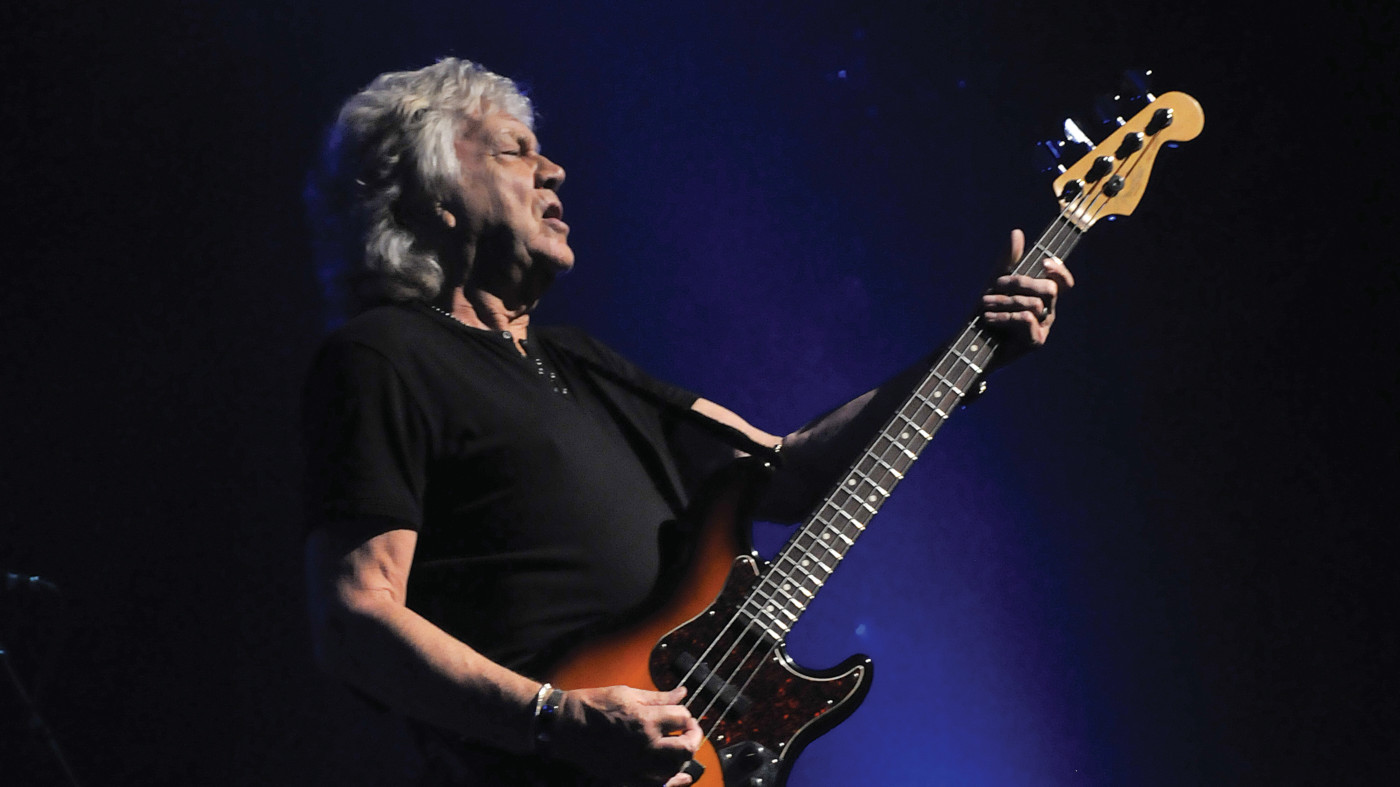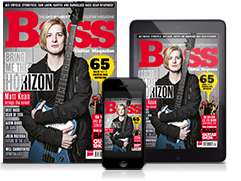The Moody Blues’ John Lodge: “My first Precision bass cost £115 - you could buy a car for £300 or a house for £950 back then”
A look back at a career at the low end

The great John Lodge, now 73, is still as productive today as he was when he first came to bass players’ notice with the Moody Blues in 1966.
We meet him on the eve of The Royal Affair tour of America, led by progressive rock icons Yes and also featuring Lodge and his solo band. A solo artist as well as band-member, Lodge last released an album under his own name in 2015 with 10,000 Light Years Ago - perhaps a reference to the number of air miles he’s clocked up over the years?
You’re a lifelong Fender player, John.
“It’s the sound I heard in my head. When I first started there were no basses at all, particularly in Birmingham: at first I didn’t know what a bass guitar was. When I was 13 or 14 I worked out all the riffs with my left hand on a piano from people like Fats Domino, Jerry Lee Lewis, Little Richard, and that was the driving force of the music I was listening to. Forget about what the right hand was doing, that was for the poseurs!”
Do you recall your first bass guitar?
I’ve recorded every Moody Blues song with that first Precision bass
“It was a solid bass called a Tuxedo. I think it was made by Dallas. I bought one of those when I was about 14, but I found that a Watkins amp [the usual amp of the day] wouldn’t deal with the bottom end. I found a Celestion speaker, built a cabinet for it, added a 50-watt Linear amp, plugged the bass in and played. It had its limitations, so I went to a store in Birmingham called Jack Woodruffs where they had a Hofner President bass that had just come in. The Tuxedo bass went in in part exchange.”
When did Fenders come in?
Get the MusicRadar Newsletter
Want all the hottest music and gear news, reviews, deals, features and more, direct to your inbox? Sign up here.
“In 1959 or maybe 1960, I saw Jerry Lee Lewis’s backing band, the Treniers, in a movie called The Girl Can’t Help It, and the bassist seemed to be playing a white Stratocaster. It was probably a Telecaster bass, but I didn’t know that at the time. I thought ‘That’s exactly the sound I want!’, so I went to Woodruffs again. There in the window, with a sign that said ‘Direct from the USA’, was a sunburst Precision bass, the very first one I’d ever seen for sale. That was it. My dad signed the papers and we bought that bass. It cost £115 - you could buy a car for £300 or a house for £950 back then. I’ve recorded every Moody Blues song with that bass.
“On 10,000 Light Years Ago I used a picture taken on the day I bought it. It played absolutely beautifully, and it still does. I don’t use it onstage though, because for the type of music I write now, I really need an active bass, so the guys at the Fender Custom Shop made me a replica 1963 Jazz. That’s what I’ve used for the past 21 years.”
Striking a balance
We’ve seen pictures of you with a double-neck.
“I played a double-neck Rickenbacker but I was always a Fender man; someone from Fender turned up one day when we were playing at Madison Square Garden in New York and they had built a double-neck for me. It’s the only one in the world like it - an upside-down Telecaster, six-string, which you can tune from the bottom, and a Telecaster bass on the top. The action is superb and it plays really well, although it’s also very heavy. It now sits in the rack in my studio at home.”
Do heavier basses sound better?
When I put a Fender on, the weight feels exactly right, but other people’s basses never feel well balanced to me
“There’s a balance, for me. When I put a Fender on, the weight feels exactly right, but other people’s basses never feel well balanced to me. As I sing as well, the balance has to be right and the instrument has to take on its own form.”
Have you experimented with bass amps?
“In the very beginning, I needed a bigger amp so I found a Linear Gold 200-watt head. Gramophone magazine told you how to make a bass cabinet with chipboard an inch and a half thick, a big soundhole at the bottom and a Celestion 15” speaker. It had to be stuffed, so I went to the tip and acquired an old mattress. The cabinet was about four feet tall - no-one had seen anything like it. It needed wheels as it was so heavy.
“Unfortunately, the first time I played it live, it rolled across the stage because of the vibration! I tried numerous things after that, Vox for example, but then Jim Marshall came up with the 4x12 cabinets and that was it. I bought all the Marshall stuff and used Marshall up until the Isle Of Wight festival in 1970. I then moved onto Hi-Watt and my band followed.”
Are you a fan of high volume on stage?
“When we started doing stadiums, PAs weren’t so big, so you really needed the on-stage amplification to project. I used Sunn equipment - lots of it - and it was really loud, but as the PAs became more sophisticated, I quickly realised that it was better to have the signal going directly from my amp into the PA. That way the sound engineer can balance the whole show: he has complete control and you can reduce the levels onstage. After that I tried various gear: one of the first amps I used in the studio was an Ampeg Piggyback.”
Tube talk
Tubes or solid-state?
“I prefer valve amps, they breathe - so I’ve got some Ampeg SVT Pro amps in, 300 watts each. I have two of those, one driving 4x10s, the other driving 1x15s, and a solid state amp driving them both in case either amp went down.
“Over time, I’ve added a Digitech GSP1101 preamp to the start of the chain, so now my bass goes wirelessly using Line 6 wireless units, then from the receiver to the preamp and then into the Ampegs. When I’m playing with the Moody Blues, I have the speakers put right under the drummer. It works really well because then the bass and the bass drum is focused, and I make sure the snare is right in the back of my head!”
Do you have a large bass collection at home?
“I have a really nice collection of basses and guitars. I have a white Precision with a passive split-coil and a pair of active single- coils, so I can switch between passive and active, and it also has a Bigsby bridge and tremolo on it. There’s well over 100 instruments in the collection.”
You do a lot of songwriting. Do you use bass to write?
“The interesting thing about writing on a bass is that you can find strange chord sequences, which is great. I don’t play piano well but I can see chord patterns, which is great if someone wants to change the key of a song. I have a fretless Precision in the collection and I was going to use it, because it was great for overdubbing in the Moody Blues, but it didn’t lend itself to a live environment, I couldn’t play it precisely enough. I also have a Fender VI bass, like Jack Bruce used to play, and I used a five-string for a few tours but it was too unwieldy. Let the keyboard player play down in that range!”


“Every note counts and fits perfectly”: Kirk Hammett names his best Metallica solo – and no, it’s not One or Master Of Puppets
“I can write anything... Just tell me what you want. You want death metal in C? Okay, here it is. A little country and western? Reggae, blues, whatever”: Yngwie Malmsteen on classical epiphanies, modern art and why he embraces the cliff edge









